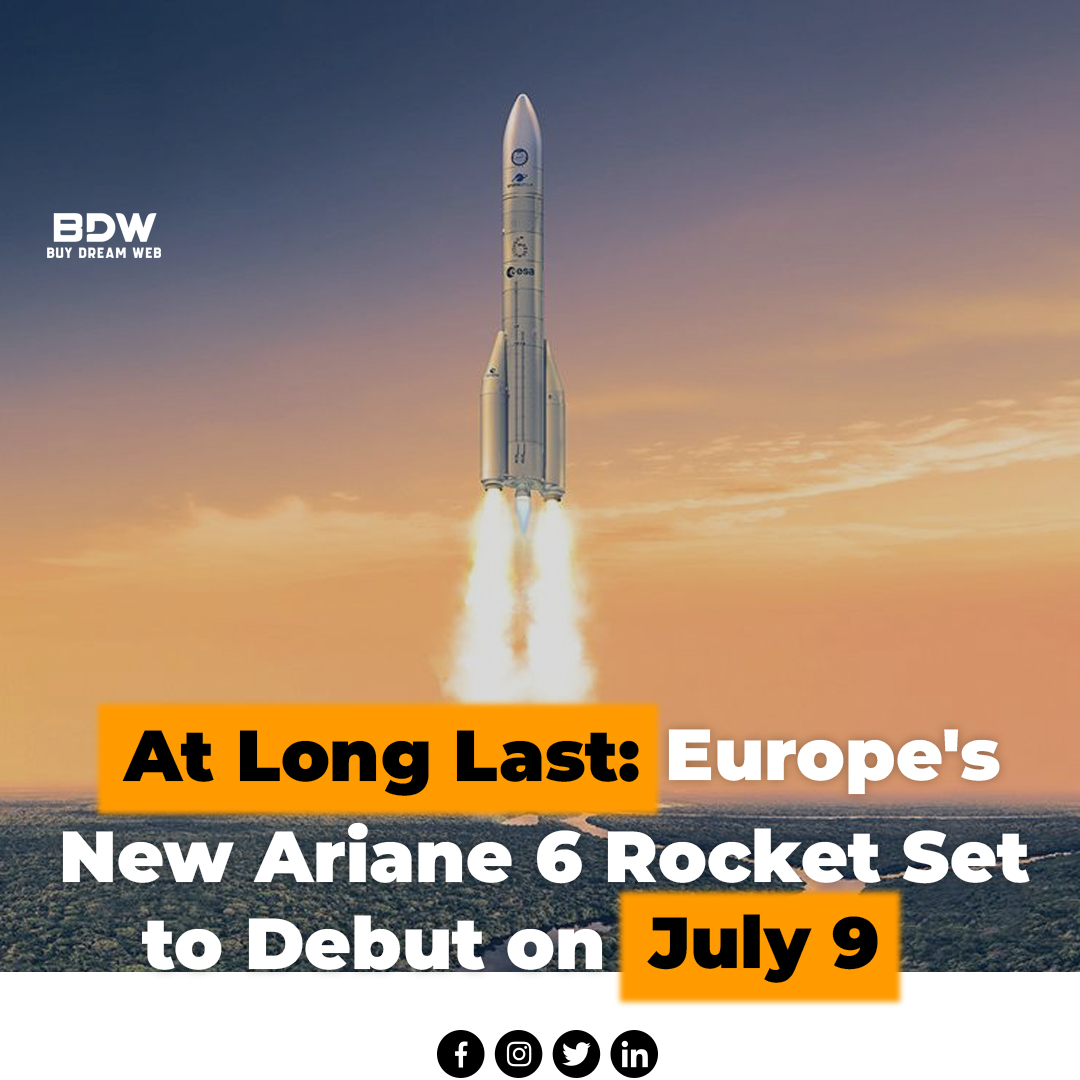Europe is taking off! Ariane 6, Set for Premiere Following Years of Development
The Ariane 6, Europe's next-generation heavy-lift launch vehicle, is finally scheduled to make its maiden flight after years of development and anticipation. The Ariane 6 is slated to launch on July 9, 2024, from Europe's Spaceport in French Guiana. This marks a significant turning point in the history of European space exploration. This blog analyzes the launch's significance, highlights the Ariane 6's technological achievements, and speculates about how it could affect future European space projects.
An Innovative Legacy: Europe's Ariane Rockets
The Ariane rocket family has played a key role in Europe's long history of space exploration. In 1979, the first Ariane rocket was launched, which was a big step toward European space access freedom. Numerous satellites, research probes, and spacecraft have been successfully launched by Ariane versions 4 and 5, among others, over the years. These rockets have been essential to Earth observation programs, scientific research, and technological improvements in communications.
Ariane 6: The Need for a New Generation
Ariane 6 became necessary for a number of reasons. Below is a summary of the main motivators:
Changing Requirements: As the space industry develops, it will require launch vehicles that can carry larger payloads and place them in a variety of orbits. This need is met by Ariane 6, which has a larger payload capacity than its predecessors.
Industry Competition: With businesses like SpaceX's Falcon 9 leading the way, the global space launch industry has grown more competitive. With Ariane 6, Europe hopes to maintain its competitive edge in the market by providing an affordable and dependable launch solution.
Retirement of Ariane 5: In July 2023, Ariane 5, the workhorse of European space missions, was decommissioned.
Technological Developments: Uncovering Ariane 6's Power
In comparison to its predecessors, the Ariane 6 has made a number of technological advancements, including:
Modular architecture: With its modular architecture, the Ariane 6 may be configured to include two or four solid rocket boosters. It can adjust to different payloads and mission requirements because of its versatility.
Re-ignitable Upper Stage: One noteworthy invention is Ariane 6's re-ignitable upper stage engine. This maximizes launch efficiency by enabling the deployment of several satellites into various orbits in a single mission.
Decreased Costs: The Ariane 6 is intended to be less expensive than earlier Ariane rockets, even with its enhanced capabilities. This is accomplished by a number of methods, including the use of more widely available commercial components and a more efficient production process.
Beyond the Launch: Ariane 6's Future
Ariane 6's successful launch is only the start. Here is a little peek at what lies ahead:
Securing Launch Contracts: Arianespace, the business in charge of creating and managing Ariane rockets, is trying to get launch contracts for different space missions and satellites. This will strengthen Ariane 6's standing in the launch business worldwide.
Promoting Cooperation Throughout Europe: Several European aerospace businesses and research organizations are working together on the Ariane 6 program. If it is successful, European space exploration collaboration may grow much further. The starting point for space exploration, the Ariane 6, is a dependable and affordable launch vehicle that is essential to Europe's aspirations in space exploration. Future trips to the Moon, Mars, and other planets may benefit from it.
Obstacles and Things to Think About
While the launch of Ariane 6 is a noteworthy accomplishment, there are still several issues that need to be resolved:
Competition: Both current and up-and-coming launch vehicle companies will be fierce rivals to Ariane 6. It will be critical to keep a competitive advantage in terms of price, dependability, and performance.
Geopolitical Factors: Space exploration activities may be impacted by the geopolitical environment. Maintaining seamless collaboration and global alliances will be critical to Ariane 6's sustained success.
A Novel Prospect for European Space Research
Ariane 6's launch marks a new era in European space exploration. This next-generation launch vehicle is the result of many years of focused research, superior engineering, and a shared European vision. With its enhanced capabilities, modular architecture, and emphasis on economy, Ariane 6 holds the potential to solidify Europe's standing as a prominent participant in the international space industry. The successful launch of Ariane 6 and its subsequent missions will serve as a monument to human creativity and our shared quest for knowledge beyond our planet, particularly as Europe sets its sights on space.





Comments